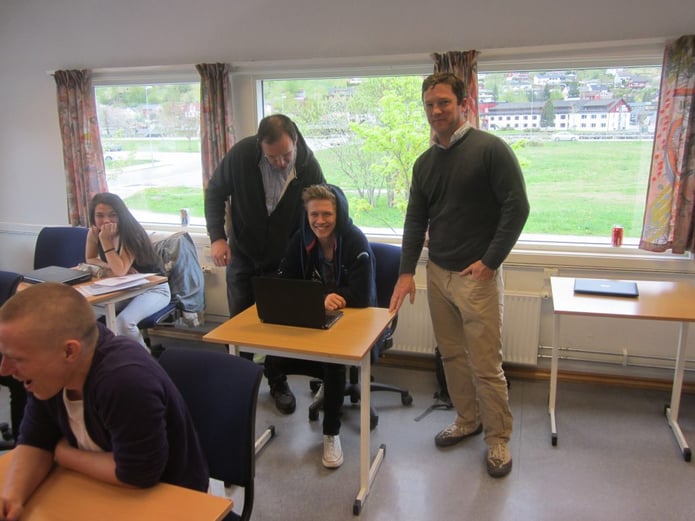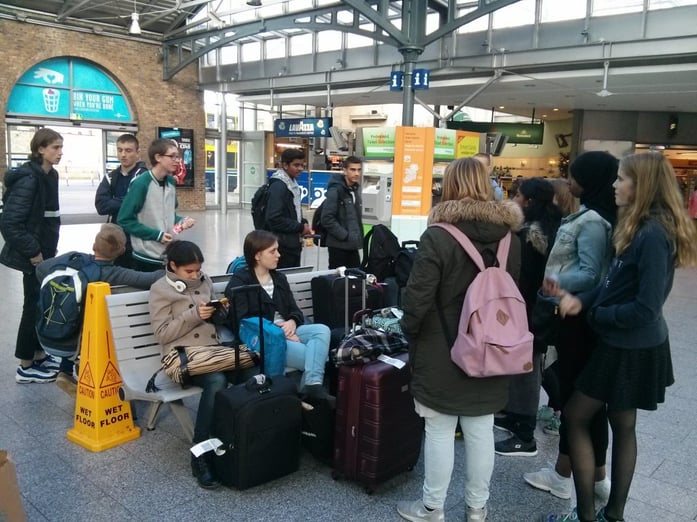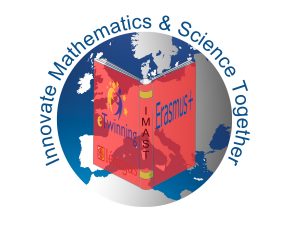Using eTwinning and Erasmus+ to put ICT at the Heart of Learning
 eTwinning is the community for schools in Europe, offering pupils from different countries the chance to work together in online projects about any subject. Davis College Mallow is a DEIS secondary school, committed to the future of education in Ireland and Europe. Davis College has taken part in a number of European projects, including eTwinning and Erasmus+. In this blog, maths teacher Ronan O'Sullivan explains how European programmes have affected the school, staff and students.
eTwinning is the community for schools in Europe, offering pupils from different countries the chance to work together in online projects about any subject. Davis College Mallow is a DEIS secondary school, committed to the future of education in Ireland and Europe. Davis College has taken part in a number of European projects, including eTwinning and Erasmus+. In this blog, maths teacher Ronan O'Sullivan explains how European programmes have affected the school, staff and students.
My Teaching Life
I have twenty years teaching experience in mathematics, to all levels in Davis College Mallow. I have also taught a wide variety of subjects. I have worked successfully with children of all social, cultural and religious backgrounds. Inclusion is something we work very hard on in Davis College. I am committed to high standards in the education of children. Since 2010 I have been involved in the Project Maths roll out in Ireland. Project Maths is an exciting, dynamic development in Irish education. It involves empowering students to develop essential problem-solving skills for higher education and the workplace by engaging teenagers with mathematics set in interesting and real-world contexts. I am a Maths Lesson Associate for the PDST.
Getting Involved with Europe
I am an eTwinning Ambassador and am currently taking the European Ambassadors course. It is very demanding, but also very rewarding. I am learning more than I could have imagined by doing this course! Davis College has been involved with European projects since 2010. We have had many successful eTwinning projects, Comenius mobility projects and lately Erasmus+ projects. I've used eTwinning to find partners from the different countries and to disseminate information. The Twinspace is a safe way for students to be part of the project. About twenty teachers in my school are now registered for eTwinning!
Our Erasmus+ Project
We applied for KA1 Erasmus+ funding through Léargas and started our two-year project “Innovate Mathematics and Science Together” in 2014. The aim was to improve the teaching and learning of mathematics and science. You can read all about the project on the Erasmus+ Project Results Platform and in our eTwinning Twinspace.
This project gave the participating organisations from Ireland, Norway and Denmark the chance to get in touch with different educational systems, share pedagogical practices and teaching methods. The common denominator was that all partners saw the project as an important part of establishing a European and intercultural dimension in their school. Anders Bruvoll, principal of the Norwegian partner school, said that "the European dimension and internationalisation were an important reason for their involvement”. Jane Janlow, the Danish coordinator, was so enamoured with the project that she organised their ‘International class’ to visit us in Davis College for a week. She said that “this mobility experience could possibly be the most significant event in my students' school life”.
“This mobility experience could possibly be the most significant event in my students' school life”.
Our traditional model where the teacher is the "expert" imparting information to the student is changing rapidly. There is now the exciting possibility that teachers will be challenged to create learning environments that promote independent thinking, conceptual understanding, innovation and lifelong learning. This idea was really at the heart of our project. As Ronan Heaney, one of our students, said: “projects like this will prepare us for the working world."
We wanted to enable all participants in the project to develop a better understanding of how ICT can improve teaching methodologies and pedagogical approaches. To this end, we compared and contrasted teaching methodologies and pedagogical approaches in the cooperating countries. The key areas we looked at were:
- How each subject is assessed and implemented
- Improving student motivation and addressing low achievement in both mathematics and science
- Education and professional development of mathematics and science teachers
- Teaching approaches and methods, inside and outside the classroom
- The cultural differences in teaching and learning mathematics and science between Ireland, Norway and Denmark
- Recommended minimum taught time for mathematics.
ICT and Technology in-service were provided by attending the BETT conference in London. This is the largest educational conference of its kind in Europe. It helped broaden our awareness of the full extent of technological aids that are available to schools. This provided a much needed space to reflect on the role of school leaders and teachers in introducing and managing the change required for such aids to be integrated into school life.

Participants were recruited on the basis on their aptitude, enthusiasm and interest in pursuing mathematics, science and cultural collaborations with their enrolled schools. A thirst for mathematics and an interest in all things European was at the heart of the selection process with all eligible teachers asked to express an interest in the project before selection occurred.
Mentoring was provided throughout the visit for visiting teachers. Host school teachers were given preparatory lectures and information packs prior to the visit to allow for seamless interaction. We prepared documents for risk prevention and distributed them to those involved. Luckily we did not have any major problems with this project, but we were well prepared!

We stayed in touch with participants throughout their mobilities by email and phone. Afterwards, the participants disseminated their information as widely as possible through the eTwinning website, leaflets, brochures, pop ups etc. The participants were mentored to see if they involved their newly acquired knowledge and skills into school life and the curriculum. When each participant came back from a mobility or an event they were asked to provide an assessment of their time in the partner institution or learning event. They reported on what they had learned and what skills they had gained. This was then disseminated between their colleagues and used to improve:
- Better knowledge of European cultural diversity

- New ICT technologies and methodologies
- Motivation to develop new and exciting methods in the classroom.
The project built up a bank of resources for schools to use, available on the eTwinning website. We hope all participants will continue to collaborate on these resources into the future. Our connections with our partners will continue past this project: we have already agreed to return to the Norwegian school through in-house fund raising.
We received the eTwinning National Quality Label in 2016. The label is a testament to the hard work put into the project by students, teachers, parents, partner schools, management, Léargas, eTwinning and the wider communities. It has increased enthusiasm in our school, and we believe it will increase participation in our new Erasmus+ project “Improving Wellbeing Through Sport and Exercise”.
Léargas, eTwinning, Erasmus+ and the European Union have given our schools experiences that we could never have dreamed possible. Our students and teachers have travelled to destinations which we only saw in travel programmes on TV. Much more important is the collaboration that has developed: the throwing open of our classroom doors, and the realisation that Lifelong Learning is at the heart of everything we do. It is this ideal that we now want to promote and expand.
Images courtesy of Ronan O'Sullivan. We welcome your contributions to the Léargas blog at comms@leargas.ie.
